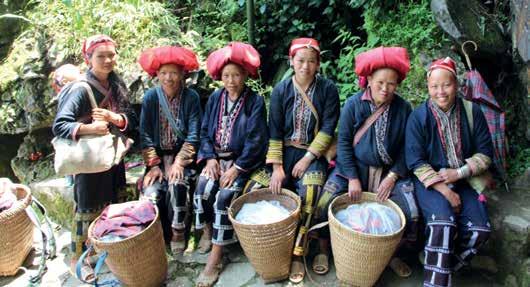
4 minute read
Travel
EAT WELL,
WORDS & IMAGES AMBER BREMNER

I’ve been very fortunate to travel overseas regularly, both with and without children. We are vegetarian and veer towards a fully plant-based diet most of the time. That’s an easy choice to make at home in New Zealand, but can be a challenge when travelling. Of course, countries with an ingrained vegetarian food tradition are an absolute joy to spend time in, with India, Thailand, Laos and Indonesia some of my personal favourites. Tender idli for breakfast in raucous Mumbai, incredible green curry with fresh peppercorns on the beach in Koh Tao, jaew mak keus eggplant dip in riverside Luang Prabang, and many and varied tempeh dishes and nasi campur from warungs throughout Bali and Lombok are forever in my food memory bank. On the flip side, finding a veg-friendly meal in China was more difficult than I imagined, with vegetable dishes usually including at least a little pork, or cooked in a meat-based broth. We didn’t know whether to laugh or cry when we discovered there were no vegetarian meal options at Shanghai Disney—even the popcorn came tossed with chunks of meat. But nothing is impossible. In downtown Shanghai we found vegan noodles and grilled lettuce at a small hand pulled noodle shop, and ate a lot of snacks from convenience stores. Thankfully, a welltimed food tour introduced us to the pleasures of jianbing, a sort of crepe filled with greens, egg, crunchy fritter, chilli and fermented bean paste, and cong you bing or fried spring onion pancakes. The challenge of seeking out local plant-based options in a new country can also spark some wonderful adventures. Vietnam

has been a real highlight for us, from cooking classes with Red Dao women in the mountains of Sapa to a memorable meal of mushroom spring rolls while sitting alongside Buddhist nuns at vegetarian restaurant Co ' m Chay Nàng T m, in Hanoi. I’m grateful my children are fairly adventurous eaters who will give most things a go. However, we do make an effort to balance out the new and weird for them by bringing some familiar foods from home, seeking out markets for simple fresh fruit and vegetables (accommodation with a kitchen is a bonus), and being relaxed about French fries and pizza being a core food group, albeit temporarily. In some countries vegetarian or vegan food often goes hand in hand with religion. Changing how we look for restaurants has been helpful, and Googling local Buddhist restaurants has yielded great results. Targeted at local diners rather than tourists, they’re inexpensive and usually offer a buffet so you can take a good look at everything and decide what you’re game to try. I’ve sought out cooking classes or food tours in Thailand, Laos, Vietnam, Bali and China. They’re such an excellent way to connect with people and gain an introduction to local foods, that they are now a priority whenever we travel. Veg-friendly travel is not only possible, it’s easy—depending on where you go. Prioritise countries that understand and embrace meat free meals, and you will be well fed indeed.
Top Tips • Pack nutritious muesli bars as an emergency meal replacement. Nuts are also a great snack to have on hand and can usually be bought locally. • Seek out a few kid friendly meals. It can help children be more willing to try something new if they know not every meal will be weird. • Book a cooking class or food tour. They’re usually happy to accommodate vegetarians and vegans (with advance notice). • Download the Happy Cow app www. happycow.net to find veg-friendly restaurants wherever you are. • Do some research about commonly used ingredients and decide where your boundaries lie. You might be happy to overlook things like fish sauce or shrimp paste in Asian dishes, and if not then you’ll be better prepared to know which dishes might be hiding them. • Go local. Avoid tourist traps and look for places to eat that are busy with local people. The food will be fresh due to high turnover and probably better than the local interpretation of Western food. • If the language barrier is high, get busy on Google Translate and make some flash cards to explain your dietary



requirements in the local language. Keep it simple and direct and say “no eggs, no dairy, no meat, no fish, no chicken”. • Falafel is your friend. Enough said. • If all else fails, a bowl of plain rice will fill your tummy until a better meal can be found.
Personal Recommendations • China: Lost Plate Food Tours www.lostplate.com • Laos: Tamarind Restaurant and Cooking School www.tamarindlaos.com • Bali: Traveling Spoon www.travelingspoon.com and Casa Luna Cooking School www.casalunabali.com

Amber Bremner | Quite Good Food www.quitegoodfood.co.nz Amber Bremner is the author of popular plant based food blog Quite Good Food. A champion for cooking and eating food that makes you feel good, she believes small changes in the way we approach food have the power to make a difference.











